About Arturo Vega
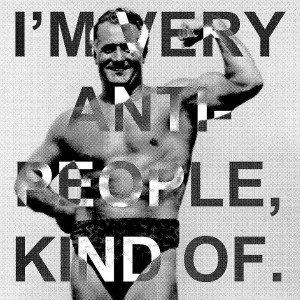 Arturo Vega escaped the repressive violence of an authoritarian regime under Mexico’s “perfect dictatorship” in the late ‘60s. He made his way to New York City, where he studied English, philosophy and photography at the New School for Social Research in the early 1970s.
Arturo Vega escaped the repressive violence of an authoritarian regime under Mexico’s “perfect dictatorship” in the late ‘60s. He made his way to New York City, where he studied English, philosophy and photography at the New School for Social Research in the early 1970s.
Vega’s interest in music dates back to his discovery of Elvis during his childhood. But it was when he later co-directed a touring production of The Who’s “Tommy” at the National University in Mexico City that he began to understand the 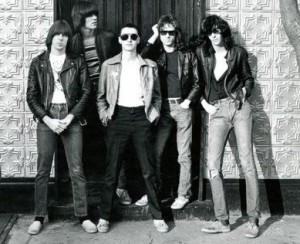 revolutionary and transformative power of music, theatre, performance and art. While working on his first painting series of supermarket signs, he befriended members of The Ramones, a rock & roll band that would soon play their first show and would decades later be inducted into the Rock n’ Roll Hall of Fame. It was Vega who designed the Ramones’ ubiquitous logo based on the Great Seal of the United States, and he was the one who also
revolutionary and transformative power of music, theatre, performance and art. While working on his first painting series of supermarket signs, he befriended members of The Ramones, a rock & roll band that would soon play their first show and would decades later be inducted into the Rock n’ Roll Hall of Fame. It was Vega who designed the Ramones’ ubiquitous logo based on the Great Seal of the United States, and he was the one who also 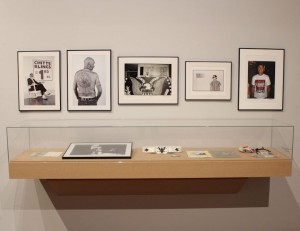 painted backdrops for their stage and created a lighting scheme loosely adapted from Albert Speer’s Lichtdom to enhance their effect. By co-opting and questioning symbols of power, Vega created visual imagery that defined the transgressive aesthetic of punk rock.
painted backdrops for their stage and created a lighting scheme loosely adapted from Albert Speer’s Lichtdom to enhance their effect. By co-opting and questioning symbols of power, Vega created visual imagery that defined the transgressive aesthetic of punk rock.
Vega’s work has been featured in numerous group shows since the 1970s. More recently, Arturo Vega 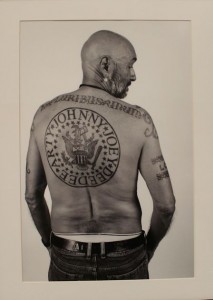 has been the subject of one-person exhibitions at CB’s 313 Gallery/New York City (1992), Raleigh Studios/Miami Beach (curated by Sandra Schulman in 1994), Galería OMR/México, D.F. (2011), Casa Redonda, Chihuahua/Mexico (2012) and at Howl! Happening in NYC in 2015 and 2016.
has been the subject of one-person exhibitions at CB’s 313 Gallery/New York City (1992), Raleigh Studios/Miami Beach (curated by Sandra Schulman in 1994), Galería OMR/México, D.F. (2011), Casa Redonda, Chihuahua/Mexico (2012) and at Howl! Happening in NYC in 2015 and 2016.
Empire: An Arturo Vega Retrospective at the Bob Rauschenberg Gallery will draw parallels and explore interests shared by Arturo Vega and the gallery’s namesake, Bob Rauschenberg. As Vega once said: “Art connects to the eternal – demanding fast changes and a reckless appetite for truth, justice and a better way of life.” For Rauschenberg, “(Art was) a means to function thoroughly and 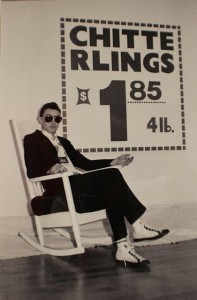 passionately in a world that has a lot more to it than paint.”
passionately in a world that has a lot more to it than paint.”
This ambitious survey runs through December 17 and will include guest lectures, performances and a panel discussion exploring Arturo Vega’s broader impact on popular culture and contextualizing his work as a visual artist. The gallery is open from 10:00 a.m. to 4:00 p.m. Monday through Friday and on Saturdays from 11:00 a.m. to 3:00 p.m. For more information, please visit http://www.RauschenbergGallery.com or telephone 239-489-9313.
November 4, 2016.
RELATED POSTS.
Arturo Vega retrospective to open at Rauschenberg Gallery on November 4














 Tom Hall is both an amateur artist and aspiring novelist who writes art quest thrillers. He is in the final stages of completing his debut novel titled "Art Detective," a story that fictionalizes the discovery of the fabled billion-dollar Impressionist collection of Parisian art dealer Josse Bernheim-Jeune, thought by many to have perished during World War II when the collection's hiding place, Castle de Rastignac in southern France, was destroyed by the Wehrmacht in reprisal for attacks made by members of the Resistance operating in the area. A former tax attorney, Tom holds a bachelor's degree as well as both a juris doctorate and masters of laws in taxation from the University of Florida. Tom lives in Estero, Florida with his fiancee, Connie, and their four cats.
Tom Hall is both an amateur artist and aspiring novelist who writes art quest thrillers. He is in the final stages of completing his debut novel titled "Art Detective," a story that fictionalizes the discovery of the fabled billion-dollar Impressionist collection of Parisian art dealer Josse Bernheim-Jeune, thought by many to have perished during World War II when the collection's hiding place, Castle de Rastignac in southern France, was destroyed by the Wehrmacht in reprisal for attacks made by members of the Resistance operating in the area. A former tax attorney, Tom holds a bachelor's degree as well as both a juris doctorate and masters of laws in taxation from the University of Florida. Tom lives in Estero, Florida with his fiancee, Connie, and their four cats.